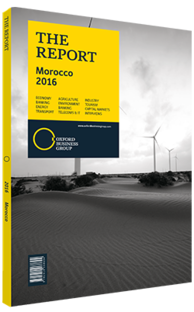Hydropower plays a growing role in the development of renewables in Morocco
With an installed capacity of about 1770 MW, hydro-power plays a key role in Morocco’s energy mix, contributing 22% of its power generation. The implementation of the energy development strategy in 2008 has led to a modest but progressive increase in capacity. This will continue through 2020 under the framework of public-private partnerships.
Overview
Morocco has long opted for the development of electric power dams. Indeed, King Hassan II had called for a new dam to be built every year. Today Morocco is home to 26 hydropower stations, totalling 1360 MW in capacity, including Al Wahda, the second-largest dam in Africa. Morocco’s hydropower system is complemented by a 460-MW pumped-storage facility located in Afourer near Beni-Mellal. As part of Morocco’s new energy development roadmap set out in 2008, authorities are looking to add 580 MW in hydropower capacity by 2020 through the development of several engineering, procurement, and construction development projects.
The flagship project is the development of a 350-MW pumped-storage power plant in Abdelmoumen, with commissioning planned for 2020. In October 2015 the National Office of Electricity and Water Supply (Office national de l’eau et de l’électricité, ONEE) submitted the tender’s conditions to three pre-qualified consortia respectively led by the French firm Vinci, Spain’s Abener and South Korea’s Daewoo. With an estimated cost of $240m (€216.1m), the project has already secured investment from the European Investment Bank (€135m), the African Development Bank ($60m, €54m) and the Clean Technology Funds ($30m, €27m). Additionally, Abdelkader Amara, the minister of energy, announced the construction of a third pumped-storage power plant will be tendered in the near future. The second major project is the development of a 170-MW dam in Mdez-El Menzel.
Private Investment
Simultaneously, authorities have been looking to bolster private investments for the development of new greenfield small to medium-scale hydropower plants under the scope of the renewable energy law. ONEE identified 200 sites which could contribute to the energy needs of isolated areas. In order to facilitate the implementation of these hydropower projects, authorities amended Law No. 13-09 in September 2015 by lifting the legal cap on private-driven dam development from 12 MW to 30 MW. As a result, in 2015 Moroccan company Platinum Power – whose reference shareholder is US private equity fund Brookestone Partners – was awarded IPP licenses for five hydroelectric projects, totalling a projected combined capacity of 120 MW. The company is set to launch tenders for the construction of the power stations, the cost of which has been estimated at $318m (€286m). Similarly, French renewable company Voltalia has signed its first deal in 2015 consisting of the construction of several hydro-power plants for a cumulated capacity of 40 MW.
Rehabilitation
In 2015 ONEE launched a tendering procedure for the rehabilitation of 12 small and medium-sized hydropower plants. This $40.3m (€36.3m) overhaul programme, mainly funded by a $38m (€34.2m) loan granted by the European Bank for Reconstruction and Development, aims to extend the lifespan of the plants and to improve safety and energy efficiency standards. The plan also includes research activities on possible integration of pumped-storage facilities at some of the dams and the completion of a survey to update estimates regarding Morocco’s available hydropower resource.
Integration Rate
Over the years, hydropower has remained a significant piece of Morocco’s renewables equation as a major pollution-reducing tool. As authorities and local businesses have been keen to further develop stock energies, administrative procedures have also been simplified to accelerate the development of hydropower plants. This should help to spur further development in this important field.
You have reached the limit of premium articles you can view for free.
Choose from the options below to purchase print or digital editions of our Reports. You can also purchase a website subscription giving you unlimited access to all of our Reports online for 12 months.
If you have already purchased this Report or have a website subscription, please login to continue.

